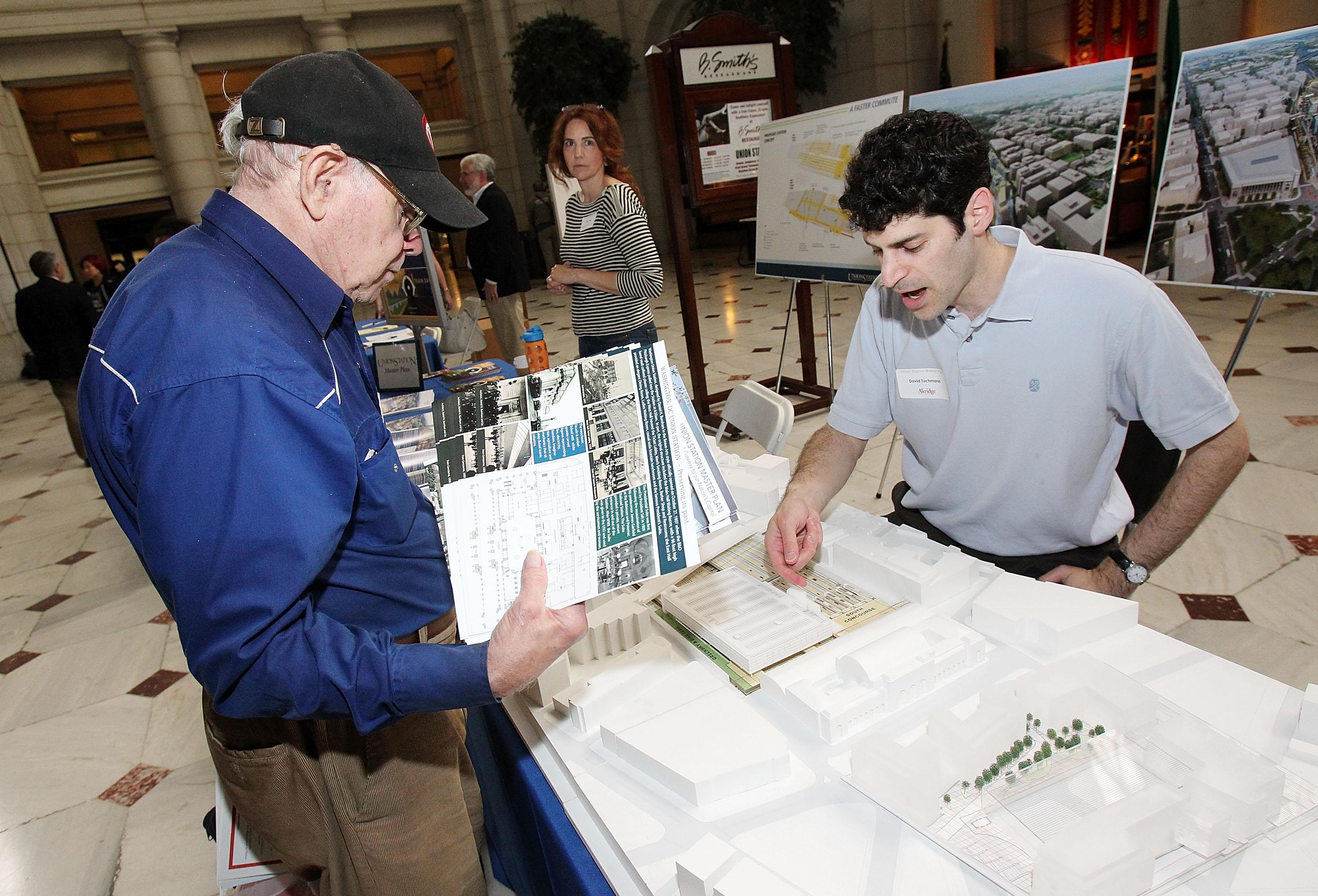Here’s how boarding a train works. Once you have your ticket and you’ve ascertained what track the train you want to ride on is coming to and you’re more-or-less ready to board, you walk to the appropriate platform. There you wait for the train. When the doors open, you get on the train. That’s how I got on a train from Brussels to Strasbourg a few weeks back, and it’s how I got on the train from Strasbourg back to Brussels. It’s how you board a New York City subway train, and it’s how you board a Washington Metropolitan Area Transit Authority train. It’s how the train stations in Rome and Paris and Berlin work. But—remarkably—it’s not how you board Amtrak trains at Washington’s Union Station.
At Union Station there’s a bizarre process where they list a gate instead of a track. The gate is a door and the door is closed. Outside the closed door there is a long snaking line. You wait in line, and then eventually the door opens. Then everyone shows their ticket to an agent, walks through an ante-chamber of some kind, and only then do you reach the platforms.
The ticket-checking is completely superfluous because you could walk to any platform once you’re out there. But it’s also unnecessary because conductors check the tickets on the trains anyway. But then you walk to the appropriate platform and board the train that’s waiting for you.
This method is both slower than the standard method and also involves overcrowding the interior of the station. Amazingly, Amtrak says it wants $7 billion to ameliorate track capacity constraints and station interior overcrowding when for the low price of $0 they could adopt standard train-boarding procedures and make progress on both of those fronts. The only possible advantage to the way Amtrak does it is to create a make-work job for the ticket inspector. But they could easily reassign the staff to be customer service agents at the booking windows.
The entire thing appears to have been designed by someone who’s never actually ridden a train anywhere—including the Metro Red Line trains that depart from the very same station—butwho is very familiar with air travel and thus has decided to recreate the gates-and-queueing process that we know and love from America’s airports. But planes only have one door, so bringing people through a single boarding gate doesn’t create an additional inefficiency. There is also a security problem with just letting passengers wander around by the runways. But trains run on train tracks (seems obvious, but again it’s unclear if key Amtrak staff have ever seen a train), and they have many doors. Absent these features and the consequent ability to have passengers wait on the platform, it would be totally infeasible to run rush-hour trains. The dwell time in the stations would be absurdly long. Which, come to think of it, Amtrak must actually know, because if you board at smaller stations (New Haven, MetroPark, etc.) the stations work just like every other train station in the world and the passengers wait on the platform. It’s only at the big stations that the weird system is in use. You could maybe persuade me that some special feature of Penn Station in New York makes this unworkable (though I’m not clear what it would be) but Union Station in D.C. is a very normal train station. Why not just let people board the trains in a normal way?
